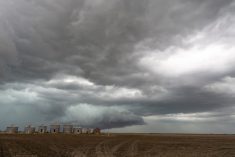There is a 57 per cent chance of La Niña emerging from now to December, and it is expected to persist through January to March 2025, a U.S. government forecaster said on Thursday.
“This La Nina may impact crops in a negative way, impacting food security in some of the poorer countries in the world, such as Somalia, Ethiopia and the Sudan,” AccuWeather’s senior commodity forecaster, Dale Mohler, said.
However, “since this La Nina has been slow in starting and is expected to be weak and should diminish by late February or March, its impact on crops may be less than what you would typically see during a La Niña,” Mohler added.
Read Also

U.S. grains: Soybeans touch 16-month high, wheat firm on Chinese demand hopes
Chicago soybean futures hit 16-month highs on Monday on expectations China will restart large-scale U.S. soy buying after the two countries reached a deal to de-escalate their trade war.
La Niña, a climatic phenomenon characterized by cooler-than-average ocean temperatures in the central and eastern equatorial Pacific, is associated with both floods and droughts affecting global agriculture, and higher Caribbean hurricane activity.
Hurricane Milton last month caused an estimated $1.5 billion (C$2.1 billion) to $2.5 billion (C$3.5 billion) in damage to Florida’s crops and agricultural infrastructure, according to a preliminary assessment released by the state’s Department of Agriculture and Consumer Services last month.
Earlier this week, Japan’s weather bureau said there appeared to be signs of La Nina phenomena developing as winter approaches, but there is a 60 per cent chance weather conditions would return to normal.
— Reporting by Anjana Anil in Bengaluru
















